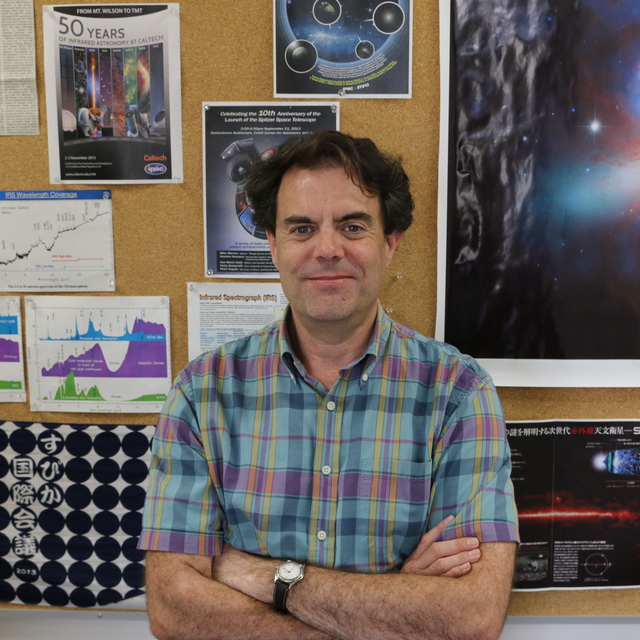April
2020
•
2020ApJ...892..119M
Authors
•
McKinney, Jed
•
Pope, Alexandra
•
Armus, Lee
•
Chary, Ranga-Ram
•
Díaz-Santos, Tanio
•
Dickinson, Mark E.
•
Kirkpatrick, Allison
Abstract
•
Star formation depends critically on cooling mechanisms in the interstellar medium (ISM); however, thermal properties of gas in galaxies at the peak epoch of star formation (z ∼ 2) remain poorly understood. A limiting factor in understanding the multiphase ISM is the lack of multiple tracers detected in the same galaxies, such as Polycyclic Aromatic Hydrocarbon (PAH) emission, a tracer of a critical photoelectric heating mechanism in interstellar gas, and [C II] 158 μm fine-structure emission, a principal coolant. We present ALMA Band 9 observations targeting [C II] in six z ∼ 2 star-forming galaxies with strong Spitzer IRS detections of PAH emission. All six galaxies are detected in dust continuum and marginally resolved. We compare the properties of PAH and [C II] emission, and constrain their relationship as a function of total infrared luminosity (LIR) and IR surface density. [C II] emission is detected in one galaxy at high signal-to-noise (34σ), and we place a secure upper limit on a second source. The rest of our sample are not detected in [C II] likely due to redshift uncertainties and narrow ALMA bandpass windows. Our results are consistent with the deficit in [C II]/LIR and PAH/LIR observed in the literature. However, the ratio of [C II] to PAH emission at z ∼ 2 is possibly much lower than what is observed in nearby dusty star-forming galaxies. This could be the result of enhanced cooling via [O I] at high-z, hotter gas and dust temperatures, and/or a reduction in the photoelectric efficiency, in which the coupling between interstellar radiation and gas heating is diminished.
Links




